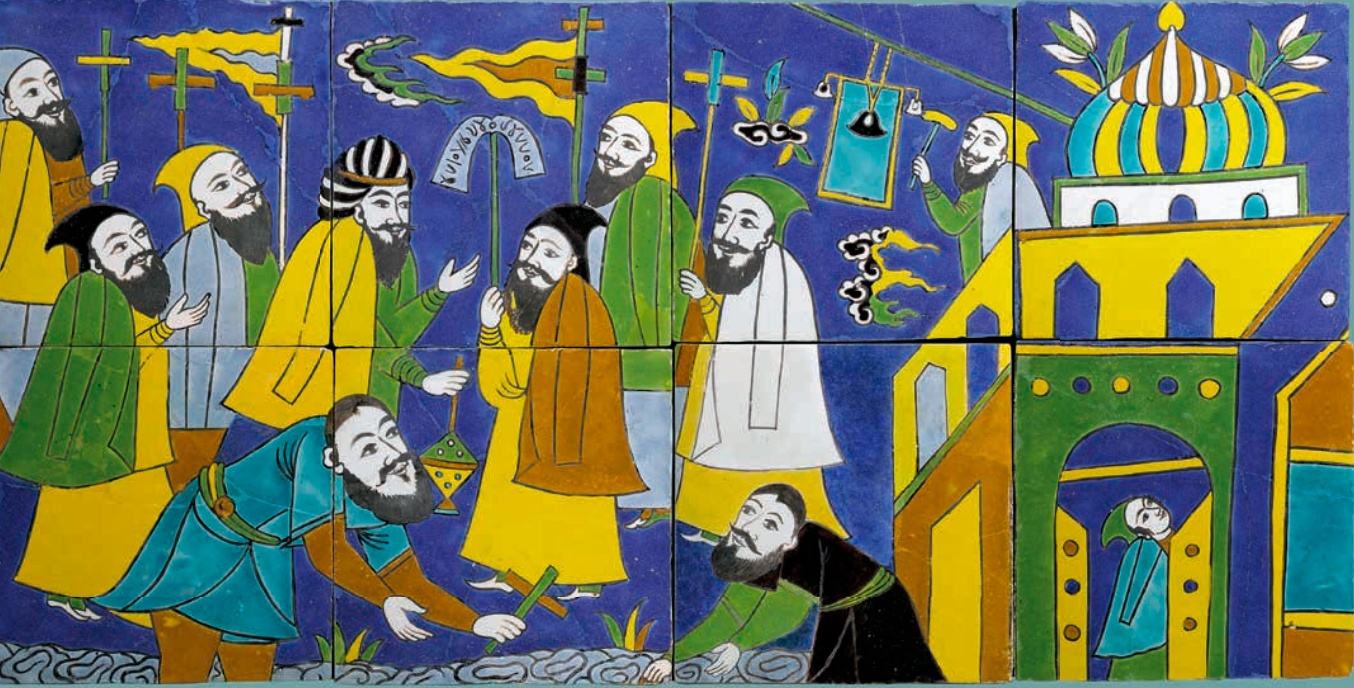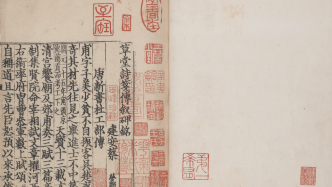
"Jade Chu Liufang: Song and Yuan Ancient Books Collection of Shanghai Museum" is the first large-scale special exhibition of ancient books since the establishment of the Shanghai Museum. From the 66 Song and Yuan ancient books on display, we can get a glimpse of the Song and Yuan ancient books collected by the Shanghai Museum.
The Shanghai Museum has a collection of more than 100 ancient books of the Song and Yuan Dynasties, most of which are exquisite and beautiful rare books. They are divided into three types: manuscripts, engraved editions, and rubbings, and they have been handed down in an orderly manner. There are many seals and seals for proofreading and viewing, which have important edition literature value. These ancient books are rich in content, covering four volumes, including rare or even isolated ones, with strong information and high collation value. At the same time, they help to deepen our understanding of the academic trends of the Song and Yuan Dynasties. They have important academic research value, and there are also important artistic works. Aesthetic Value.
"The source of culture lies in the contract; the benefit of the contract comes from the material." The appearance of paper and its application in writing and printing greatly facilitated the recording of words and brought the prosperity of classics. In the Song and Yuan dynasties, bamboo paper and leather paper gradually replaced the hemp and rattan paper that were popular in the previous dynasties, and oily ink gradually replaced pine ink, creating conditions for the further prosperity of classics. Although manuscripts have always existed side by side with printed books, printed books have gradually become the mainstream, and China has entered the era of printing classics. While woodblock printing entered the golden age, rubbing technology also gradually matured. "The printing of books in our country is called by Western and Western historians the creation of the world, that is, the excellent paper and ink, the trails are impressive, and it was enough to boast to the world seven or eight hundred years ago." Printed books have accelerated the generation of knowledge and cultural exchanges. The dissemination of knowledge and ideas has accelerated the development of human civilization.
During the Song and Yuan Dynasties, the economy was prosperous, education developed, science and technology advanced, and culture flourished. Under this background, printing can develop and grow, which in turn promotes the further development of economy, education, science and technology, and culture. Since the rise of the scholar-bureaucrat class in the early Song Dynasty, it has led to the revival of Confucianism and Buddhism, which in turn promoted the high development of literature, history, and art, and the rise of epigraphy, resulting in a series of new changes in the field of academic thought. In the Song and Yuan Dynasties, tens of thousands of classics were engraved, which were actually the product of the new changes in academic trends in the Song and Yuan Dynasties.
During the Song and Yuan Dynasties, there were a large number of engraved classics, but they have been handed down to this day, and the number of surviving books is rare. The Shanghai Museum has collected over a hundred ancient books of the Song and Yuan Dynasties, and most of them are rare and rare books of the highest quality and beauty, which are very precious.
1. Classics of Confucianism
Since Emperor Wu of the Han Dynasty began to respect Confucianism, Confucianism has been regarded as the official philosophy, and learning Confucian classics has become an important way to achieve success. During the Xiping period of the Eastern Han Dynasty, the imperial court began to publish Confucian classics in Yushi. Feng Dao, Prime Minister of the Later Tang Dynasty, published the Nine Classics in the second year of Changxing (932) according to the "Kaicheng Stone Classic", which was the first time in history to engrave and print Confucian classics. During the Song and Yuan dynasties, the official publication of the Five Classics, Seven Classics, Nine Classics, Twelve Classics, and Thirteen Classics, and other "serious classics", while bookstores and private publications were countless. The Shanghai Museum has a revised version engraved in the Ming Dynasty in Yuan Dynasty, "Jianben Fuyin Chunqiu Guliang Commentary" in 20 volumes [Fig. 1]. This original version has two sides on the left and right sides and a double fish tail, which is the layout style of the Yuan block edition, while the layout of the revised version in the Ming Dynasty has a single side on all sides and a single fish tail. From the content point of view, the original version deserves more attention. From the perspective of restoration, whether the revised version presents a different layout style and whether there is any difference in content from the original version is also worth studying as a topic.

Figure 1 Yuan engraved and revised version of "Jianben with Yin Chunqiu Guliang Commentary" in 20 volumes
The Song Dynasty suppressed martial arts and promoted literature, reformed the imperial examination system, and expanded the number of candidates for scholars. The status of Confucian scholars was unprecedentedly high. Subsequently, the self-awareness of Confucian students also continued to increase. They actively participated in social construction and political affairs, and continuously promoted the self-innovation of Confucianism, which effectively promoted the revival of Confucianism. "Song Confucianism changed the ancient Confucianism of the Han and Tang Dynasties, and developed a new academic form from it, which is Neo-Confucianism, or Daoism. "Song History" set up "Taoism Biography" for the first time in addition to "Rulin Biography", which accurately revealed This is a new change in the field of academic culture.” Confucianists are keen to creatively elucidate and explain Confucian classics, and have produced a large number of interpretations. The Yuan inherited the Song system and ruled the country with Confucianism. Since the Yanyou Imperial Examination, Cheng-Zhu Neo-Confucianism has been respected as the official philosophy. "In the Yuan Dynasty, in addition to translating and engraving the scriptures annotated in the Tang and Song Dynasties, Yuan Confucian scholars such as Wu Cheng, Hu Yigui, Zhao Si, Zhao De, Wang Kekuan, Chen Hao, Xiong Liangfu, Dong Zhenqing, Dong Ding, Wang Chongyun, Zhu Zuyi, Luo Fu, Yu Yan , Li Jian, Li Lian, Li Gongkai, Ao Jigong, Qi Lvqian, Lin Quansheng, Baoba and more than 20 people explained the works of each scripture, all of which are handed down in block editions in Yuan Dynasty.” In addition, Song Confucianism, in addition to the Five Classics system, created a new The Four Books system was established as a ladder to enter the Five Classics, so as to realize their ambition to revive Confucianism. According to statistics, there are 783 four-book works in Song Dynasty and 290 four-book works in Yuan Dynasty. The Shanghai Museum has a block-printed edition of "Yili" in seventeen volumes of "Yili" and "Yili Tu" in seventeen volumes of "Bypass Tu" (seven volumes are preserved) in Yuan Chonghua's Yu Zhi'an Qin Youtang [Fig. 2]. This book has the style of a typical Jianyangfang block-printed edition, with a compact layout and elegant and elegant fonts, which absorbs the calligraphy features of Zhao Mengfu. "During the 40 years from the eighth year of Dade (1304) to the fifth year of Zhizheng (1345), Qin Youtang engraved a lot of books, and it was the most prestigious bookstore in Jianyang in the Yuan Dynasty." Qin Youtang also engraved Song Fuguang's "Poetry Boy Asking" Twenty volumes, Song Yancan's "Poems" thirty-six volumes, Yuan Dong Ding's "Shu Ji Zhuan Ji Lu Zhuan Shu" six volumes, "Zhu Zi Storytelling Outline Series" one volume, Yuan Chen Shikai's "Shu Cai Shi Biography" six volumes, Yuan Hu Bingwen "Si Shu Tong" twenty-six volumes and so on.

Figure 2 Yuan Chonghua Yuzhi Anqin Youtang engraved edition "Yili" 17 volumes "Yili Tu" 17 volumes "Bypass Tu" (seven volumes preserved)
Corresponding to the development and prosperity of Confucianism, the imperial examination culture in the Song Dynasty also continued to develop. "In the Song Renzong era, the part about Confucian classics in the imperial examinations began to emphasize righteousness, and the trend of the academic circles studying Confucian classics at that time was not limited to chapters and sentences, but to give play to righteousness. It can be said to echo each other." In the fourth year of Song Jingde (1007), the Ministry of Rites according to " "Guang Yun" promulgated "Yun Lue" as the standard for examining the sound and determining the rhyme for the exam. This book no longer exists. In the fourth year of Jingyou's reign (1037), Ding Du and others re-edited "Yun Lue" according to the imperial edict, and it was composed of five volumes of "Rhyme of the Ministry of Rites" and one volume of "Gong Ju Tiao Shi". "Its revisions and engravings were frequent, and its publication spread widely. It had a great influence on Song people, far exceeding other official rhyme books in Song Dynasty." "Addition and revision of mutual annotations to the rhyme of the Ministry of Rites". There are five volumes of "Zenxiu Mutual Notes on the Rhyme of the Ministry of Rites", referred to as "Zengyun", a fragment of Yuan engraved in the Shanghai Museum (one volume is preserved). There are only three copies of this book in the Song Dynasty, with a layout of 10 lines and 16 characters in the half leaf, and double-line small characters in the annotations, 32 characters in each line. In the Yuan Dynasty, Rixin Shutang, Feixian Xingqing Shutang, Luoxi Shutang, etc. all had engraved editions, and many of them survived. Due to missing key information, we cannot determine the specific edition of this book.
The prosperity of Neo Confucianism aroused the trend of lectures, and a large number of their quotations and lectures were published. Zhu Xi, the master of Confucianism, edited and printed quotations for Ercheng, and his remarks were compiled into books by his disciples and published in the world. In the first year of Yuan Taiding (1324) in the Shanghai Museum, the engraved edition of Meixi Academy "Class Editing Mr. Wengong Economic Wenheng" 25 volumes "Later Collection" 25 volumes "Sequel" 22 volumes (saved The twenty-five volumes of the first collection) [Figure 3] and the Yuan engraved version of "Mr. Xishan Zhenwen Zhonggong Reading the Secretary" volume □□ (existing eighteen volumes) [Figure 4], which is obviously the product of the Yuan Dynasty's Tu Zuncheng and Zhu thoughts . The first book is a compilation of excerpts from Zhu Xi's speeches by Zhu Xi's later scholars. "Zhu Zi's life is full of knowledge, which can be seen here"; Authentic successor. From the version point of view, the first book is the earliest existing version of "Economic Wenheng", and the second book version has not been recorded, which is quite valuable.
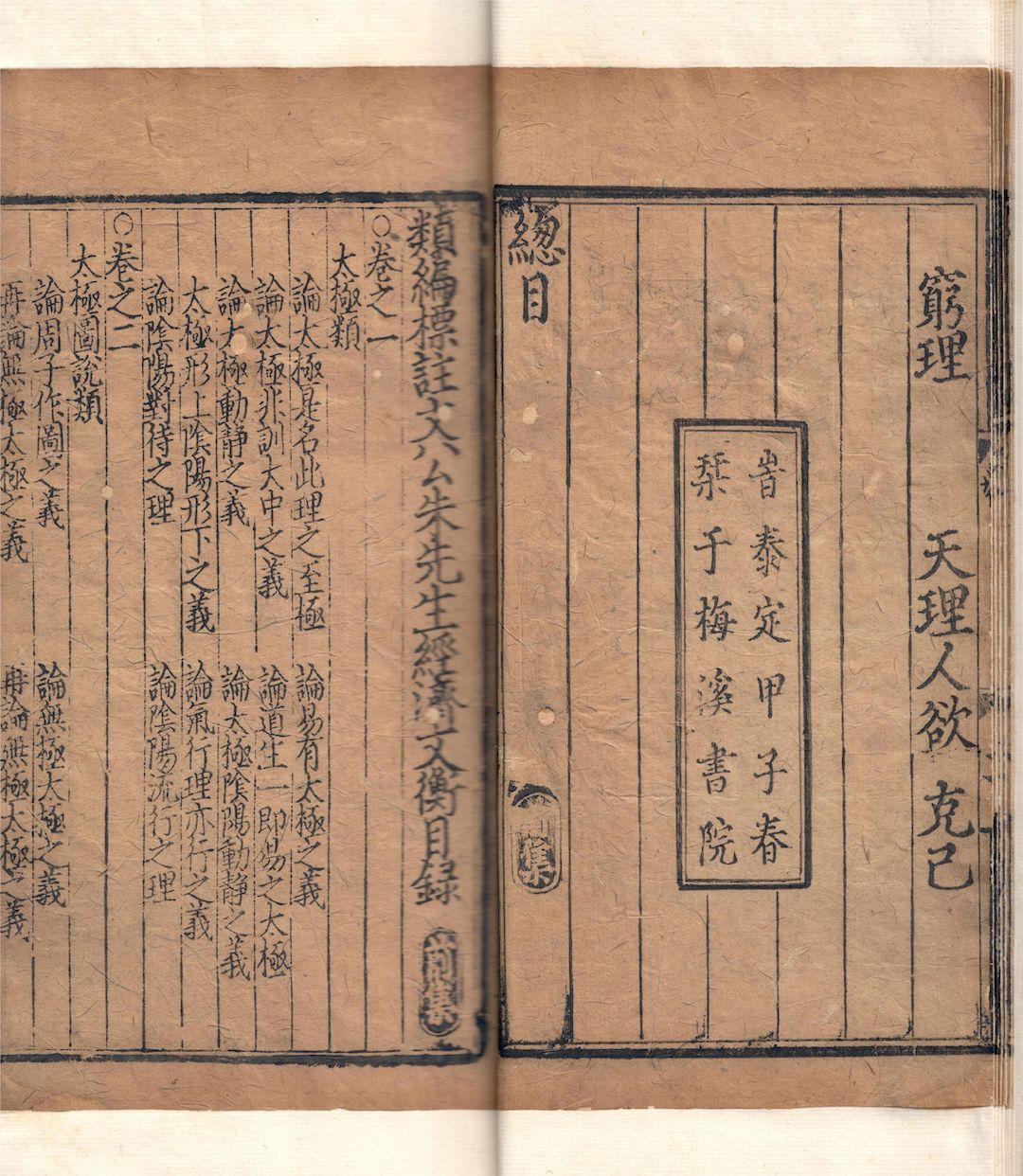
Figure 3 The first year of Taiding in Yuan Dynasty (1324) Meixi Academy block edition "Class Editing Mr. Wen Gong Economic Wenheng First Collection" twenty-five volumes "Later Collection" twenty-five volumes "Sequel" twenty-two volumes "Volume 25)
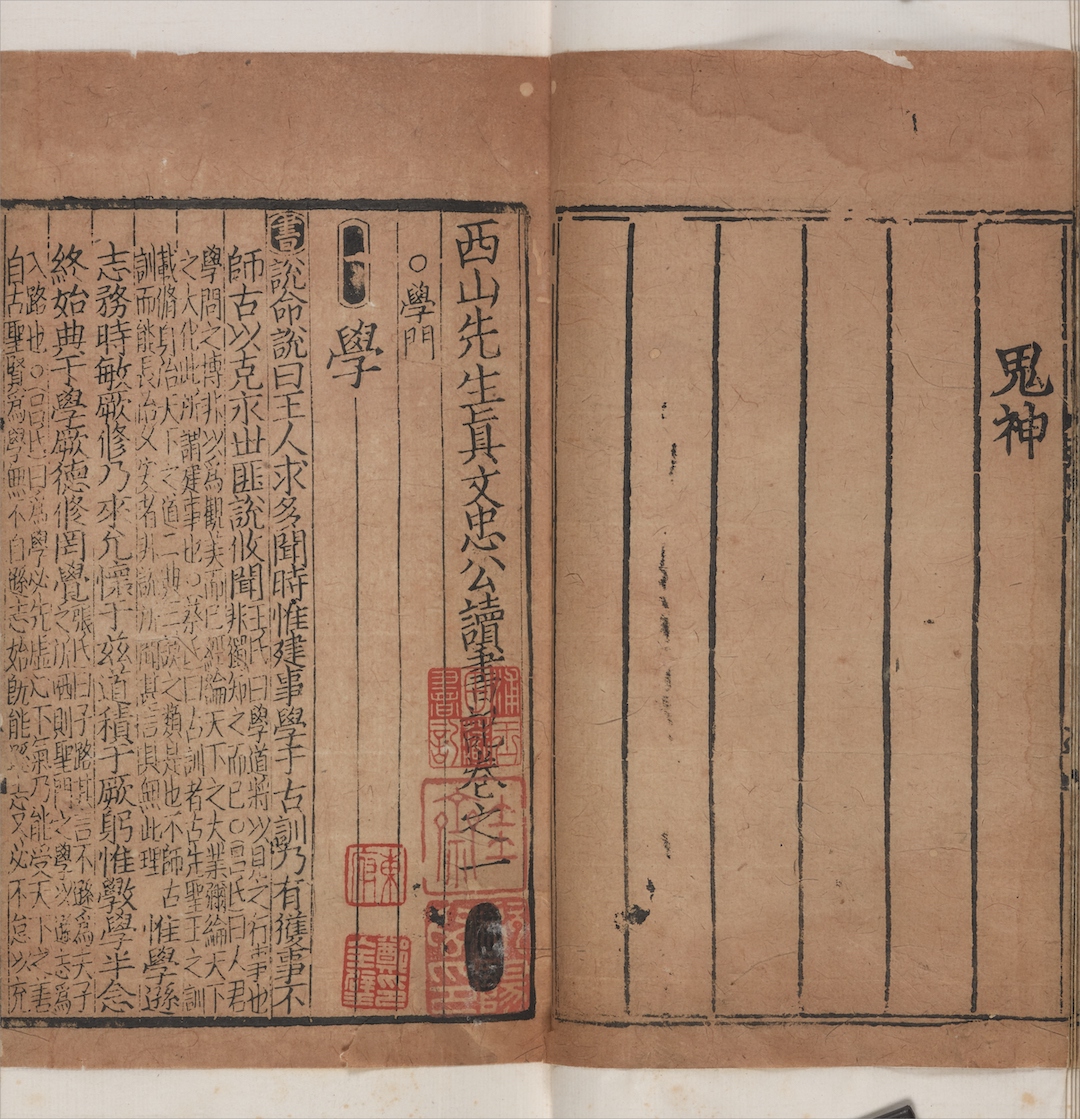
Fig. 4 Yuan block edition "Mr. Xishan Zhenwen Zhonggong Reading Secretary" Volume□□ (18 volumes preserved)
2. Buddhist classics
After the Chineseization of Buddhism, those who worshiped Buddha went up to the emperor and down to the common people, and their influence was so great that Han Yu in the Tang Dynasty tried his best to reject Buddhism. But what he rejected was Buddhism, not Buddhism. In the early Song Dynasty, Sun Fu, Shi Jie, Ouyang Xiu and others also followed Han Yu and rejected Buddhism. "After the Song Dynasty entered into a prosperous period, Confucianism's attitude towards Buddhism has undergone three obvious changes. One is that intellectuals are addicted to reading Buddhist scriptures. Criticism, and the third is to absorb Buddhism on a large scale to transform and enrich Confucianism." Su Shi showed an eclecticism of Confucianism, Buddhism, and Taoism. As for Confucianists such as Zhou Dunyi, Zhang Zai, Wang Anshi, Er Cheng, etc., they also supported Buddhism and became Confucianism. Even Zhu Xi, who was the master of Song studies, was able to pay attention to absorbing reasonable factors in Buddhism and perfecting the ideological system of Confucianism while striving to avoid Buddhism and Laos and insisting on inheriting the Confucian and Mencius orthodoxy. And he had a deep friendship with Buddhist disciples Dahui Zonggao and Kaishan Daoqian. The dispute between Confucianism and Buddhism also promoted the secularization tendency of Buddhism itself. Folks copy or recite Buddhist classics to make merit, hoping to pray for well-being and eliminate disasters and sufferings, so their needs are very extensive.
The Buddhist scriptures transcribed in ancient times were not only awarded by officials, but also transcribed by folks. As for the scribes, there are official translators, professional scripture writers, and ordinary people. According to the Dunhuang documents, the Song and Yuan dynasties continued the habit of copying Buddhist scriptures of the previous dynasties. Most of the existing scriptures are excavated from Dunhuang, while the seven in the Shanghai Museum are handed down from generation to generation, which are of special value. 5 of them are dated. On June 12th in the sixth year of the Northern Song Dynasty (973), as a meritorious deed, Du Yu wrote ten volumes of the "Miaofa Lotus Sutra" with gold and silver powder. There are two fragments in the Shanghai Museum, both of which are on porcelain blue paper. One contains the first volume of Buddha paintings and inscriptions [Fig. 5]. The title, the name of the translator, the title and the word "Buddha" in the main text are written with gold powder, and the rest of the text and the end title are written with silver powder. In the fifth year of Chunhua in the Northern Song Dynasty (994), "Buddha said Vajra Fragrance Bodhisattva Daming Achievement Sutra" in three volumes (one volume preserved) [Fig. 6] is a government manuscript, which was translated by Shihu (?—1017), an eminent monk who translated scriptures in the Song Dynasty. From the identity and name information in the translation inscriptions, it can be seen that "the organization of its translation field is no different from that since the Sui and Tang Dynasties." In the first year of Huangyou (1049) of the Northern Song Dynasty, he wrote a volume of "The Book of Pregnancy" [Fig. 7]. Ankang". Believers in the Song Dynasty continued the previous habit of cutting their capital and donating money, and asking people to write scriptures as merit and virtue, in order to pray for blessings and avoid disasters. This volume should be regarded as a scripture written by monks, with strong brushwork and neat writing, following the "standard format" of Buddhist scriptures with 17 characters. The "Vajra Prajna Paramita Sutra" written in the fourth year of Shaoxing in the Southern Song Dynasty (1134) is the latest among the Song Dynasty manuscripts with a clear date of transcription in the Shanghai Museum. It was written by the people and is quite dilapidated. This volume has already seen the meaning of running script, and the writing style has changed obviously, but it is completely different from the hasty and sloppy writing of ordinary folk scriptures. There are also two undated Buddhist scriptures in the Shanghai Museum. After research, they are also Song Dynasty manuscripts. Eighty volumes of "Dafang Guangfo Huayan Sutra" (one volume is preserved) [Figure 8], which is the zero volume of "Dahening Guozang", which is the same as the "Dafang Guangfo Huayan Sutra" in "Dahening Guozang" in the National Library of China "Volume 5 has the same writing style. About "Da He Ning Guo Zang", the current knowledge is limited. Although some characters such as "wish" retain the writing style of the Tang people, some characters such as "juan" and "suo" show a distinct style of the Song people. Thirty volumes of "Buddha Says All Tathagatas, True Photographs, Mahayana Presents, and Realizations of the Samadhi Great Teaching King Sutra" (one volume preserved), translated by Song Shihu. The preface inscription reads "August in the third year of Shi Daguan", so Mr. Li Weiguo thought it was "Fujian writing scriptures in the third year of Daguan in the Northern Song Dynasty", but it is not. This volume is a copy of "Chongning Zang" according to Kozanji Temple in Kamakura period in Japan, and the era is about from the Southern Song Dynasty to the Yuan Dynasty. Its writing style is not similar to Chinese, and most of the characters exceed the bottom frame. In the manuscripts, there are often some inscriptions recorded in the original version without modification, and there are also times for supplementary inscriptions or even false inscriptions for later generations, which has caused certain troubles for dating.
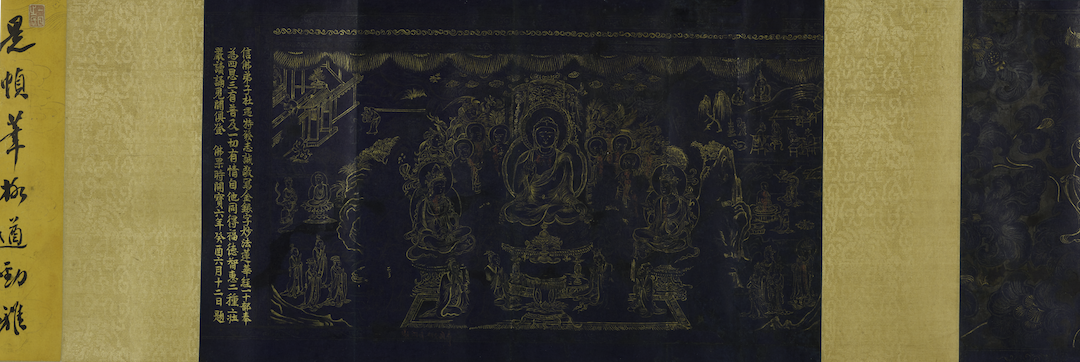
Figure 5 Seven volumes of Du Yu's "Miaofa Lianhua Jing" written by Du Yu in the sixth year of the Northern Song Dynasty (973) (existing volume five)

Figure 6 Three volumes of the official manuscript "Buddha Says Vajra Fragrance Bodhisattva Daming Achievement Rituals Sutra" in the fifth year of Chunhua in the Northern Song Dynasty (994) (first volume)
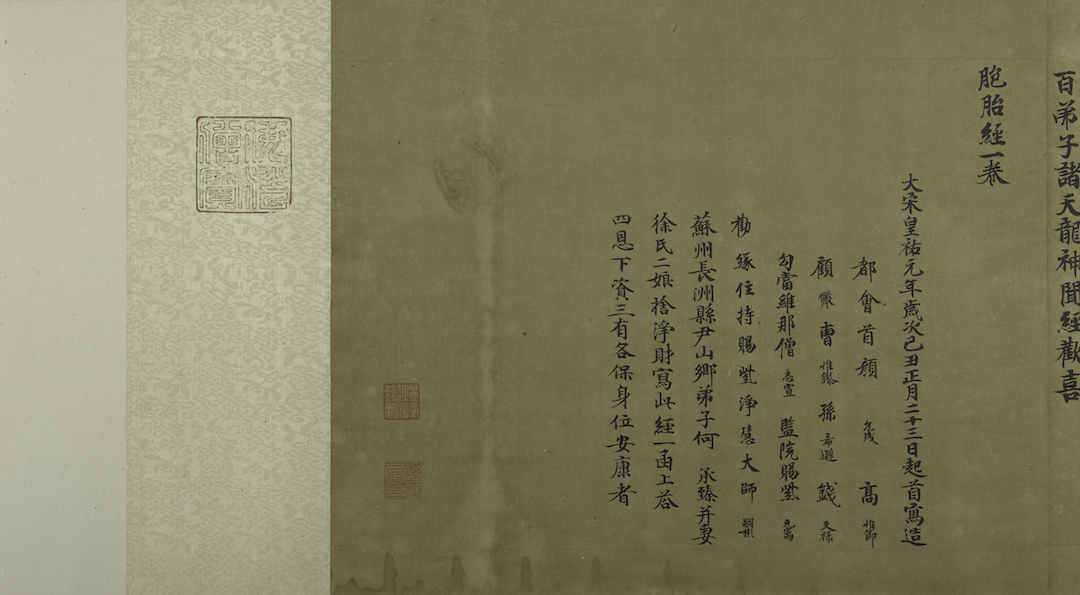
Fig. 7 A volume of "The Book of Birth" written in the first year of Huangyou (1049) of the Northern Song Dynasty

Figure 8 Eighty volumes of the Song manuscript "Dafang Guangfo Huayan Sutra" (one volume preserved)
As for the publication of Buddhist classics in the Song and Yuan Dynasties, it can be described as vigorous. Only the Tripitaka, the Song Dynasty engraved seven volumes: Kaibao Zang, Chongning Zang, Pilu Zang, Sixi Yuanjue Zang, Sixi Zifu Zang, Mingzhou Zang, and Qisha Zang. The official engraving of "Kai Treasures" is the ancestral edition of various Buddhist collections. It is mounted on a scroll, with 23 lines and 14 characters per line; the other six volumes are privately engraved, folded by sutras, and the format is 50 or 40 per edition. , 6 lines per fold, 17 characters per line. In addition to the Central Plains Dynasty, other regimes also advocated Buddhism and published the Tripitaka. Liao inscribed "Khitan Canon" in big characters and small characters "Khitan Canon", gold engraved "Zhao Chengzang", Xixia engraved Chinese "Tripitaka" and Xixia script "Tripitaka" each. By the Yuan Dynasty, in addition to supplementary engravings of "Zhaocheng Zang" and "Qisha Zang", there were also engraved "Puning Zang", "Yuanguan Zang" and "Pilu Zang". Zero species and one axis of "Zhao Cheng Zang" collected by Shanghai Museum, from the ninth year of Jinhuangtong to the thirteenth year of Dading (1149-1173) engraved in Zhaocheng's gold collection at Tianning Temple in Xiezhou. Said Maitreya's Coming Time Sutra, Volume 1 [Figure 9]. Its knives are strong, its fonts are elegant, and the door painting "Sakyamuni Saying Map" has smooth and flexible lines and exquisite printing. The binding and format of "Zhao Chengzang" inherited "Kai Bao Zang", and some scriptures "retained in the inscriptions of the Song Dynasty include Kai Bao, Xianping, Tiansheng, Shaosheng, etc., which are all engraved on Kai Bao Zang" "Remains" belongs to the Central Plains system. The Shanghai Museum also has four engraved editions of "Puning Cang" collected by the Tripitaka Bureau of Dapuning Temple, Yuhang, Hangzhou Road, Yuhang, from Yuan to Yuan, namely "Dafang Guangfo Huayan Sutra" in sixty volumes (one volume is preserved), "Buddha said One volume of the Bodhisattva Sutra of Ever Born, one volume of the Vajra Field Dharani Sutra [Figure 10], and thirteen volumes of the Mahayana Adornment Sutra (one volume is preserved). The paper is fine and glossy, the characters are strong, and the engraving is fine, which belongs to the southern system. Among them, "Dafang Guangfo Huayan Sutra" has a door painting, and the cover is blue; the other three have no door painting, and the cover is camel color, while the "Diamond Field Dharani Sutra" still has a camel color jacket, retaining its original appearance.
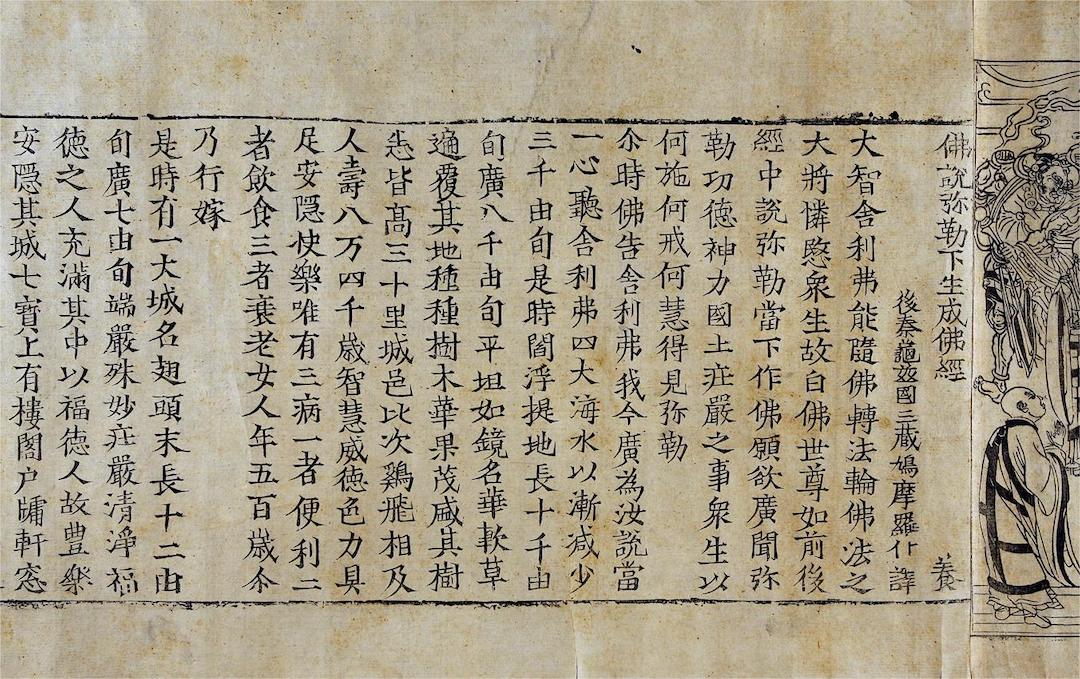
Figure 9. The ninth year of Jin Huangtong to the thirteenth year of Dading (1149-1173), a volume of "Buddha Said Maitreya's Next Generation Buddhist Sutra" and "Buddha Said Maitreya's Coming Time Sutra" were engraved in Zhaocheng Jinzang at Tianning Temple in Xiezhou.

Fig. 10 A volume of "King Kong Field Dharani Sutra" raised by the Tripitaka Bureau of Dapuning Temple in Yuhang, Hangzhou Road from Yuan to Yuan
The single-engraved Buddhist scriptures and their commentaries other than the Tripitaka are more widely circulated, and it is no longer possible to accurately count their number. Its format is not customized, and the publishing institutions involve government, bookstores, private individuals and temples. Shi Bukong translated a volume of "All Tathagata Mind Secret Body Relic Treasure Casket Printing Dharani Sutra", also known as "Treasure Casket Printing Sutra". It was engraved by Qian Chu, the king of Wuyue, and offered to the bricks of Leifeng Pagoda for merit, so it is commonly known as "Leifeng Pagoda Sutra". It is now known that there are three kinds of editions of this scripture, the third year of Xiande in the Later Zhou Dynasty (956), the third year of Qiande in the Northern Song Dynasty (965), and the eighth year of Kaibao in the Northern Song Dynasty (975). Although Wuyue Kingdom enshrined Zhengshuo of the Song Dynasty, it received soil in the third year of Taiping Xingguo (978), so this edition is often regarded as the Five Dynasties block edition. There are several engraved copies in the eighth year of Kaibao (975) of the Northern Song Dynasty collected by the Shanghai Museum [Fig. 11]. Three of them are mounted on scrolls, with Chen Zengshou's paintings in front of the scrolls, and several famous inscriptions and postscripts to add color to them. The engraved edition of King Nian Sanlang's family of Lin'an in the Song Dynasty "Vajra Prajna Paramita Sutra" [Fig. 12] is also a translation of Kumarajiva. The copy in the Shanghai Museum is in the old collection of Fu Zengxiang, which was described in Fu's "Zangyuan Qunshu Jingyanlu". Although it is called "family engraving", it can be seen from the inscription "Printed and printed by Wang Niansanlang's family ambitions in West Jingfang, Pengqian South Street", that it is actually a bookstore block rather than a private block. Fu's inscription said that this edition is "really rare", and its "powerful and neat fonts, elegant pictures, are extremely valuable", so it cannot be "regarded as ordinary Song editions", revealing its edition value.
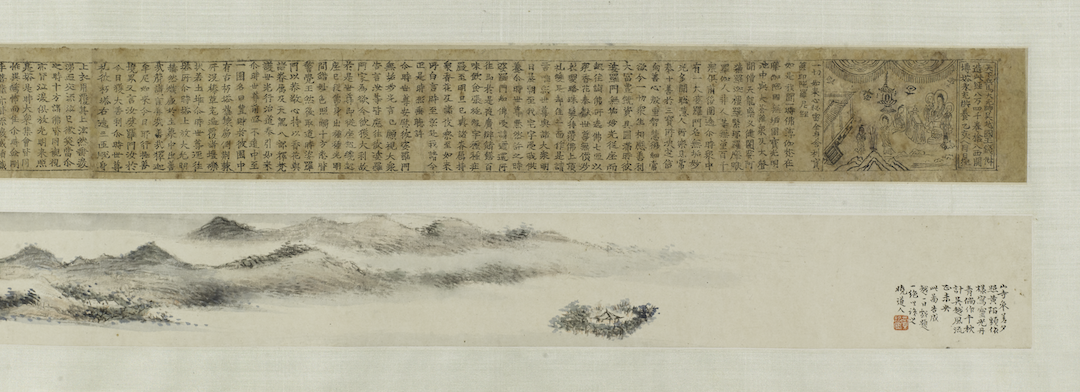
Figure 11 The eighth year of Kaibao in the Northern Song Dynasty (975) engraved edition of "All Tathagata Mind Secrets Whole Body Relic Treasure Casket Printed Dharani Sutra" one volume

Figure 12 The Diamond Prajna Paramita Sutra of King Nian Sanlang of Lin’an in the Song Dynasty
Just as Confucian classics require the help of commentaries to read through, the meaning of Chinese Buddhist scriptures is profound and difficult to understand. Under the development situation of Buddhist literati, secularization, and civilianization in Song and Yuan Dynasties, the demand for Buddhist commentaries surged. There are 3 inscribed fragments of Buddhist scriptures and commentaries in the Shanghai Museum, which are: the engraved edition of "Dafang Guangfo Huayan Jingshu" in the 16th year of Shaoxing in the Southern Song Dynasty (1146) in sixty volumes (one volume preserved), written by Shi Chengguan in Tang Dynasty; The engraved version of "Dafang Guangfo Huayan Sutra" in one hundred and twenty volumes (two volumes are preserved) [Fig. 13], Tang Shicheng's commentary, Song Shijingyuanlushu's annotations; Southern Song Dynasty's engraved edition of "King Kong Ji Waibiejie" in four volumes (save one volume), retelling by Shi Guan in the Southern Song Dynasty. They are all in the old collection of Ye Gongchuo.

Figure 13 One hundred and twenty volumes of "Dafang Guangfo Huayan Jingshu" engraved by the Transshipment Department of the Song Dynasty and Zhejiang Province (two volumes preserved)
3. Classics of literature and art
Generally speaking, the literature and art of the Song Dynasty were very developed, with outstanding achievements and rich writings, while the Yuan Dynasty showed a decline. As far as the publication of classics is concerned, the Song and Yuan people published the literary and artistic classics of the previous generation out of pursuit and learning needs, and most of the works of the Song and Yuan people were published as books.
Influenced by the "Book of Songs", poetry has always been the orthodox of Chinese literature. At the beginning of the Song Dynasty, Wang Yucheng imitated Bai Juyi, which was called "Bai Style"; Lin Bu, Kou Zhun, etc. imitated Jia Dao and Yao He, which was called "Late Tang Style"; Yang Yi, Qian Weiyan, Zhang Yong, etc. imitated Li Shangyin , is "Xikunti". Since then, the poets of Song and Yuan Dynasties were able to absorb the rich spirit and charm of Tang poetry, and at the same time find new ways to form a new style known for its rationality and interest. In terms of prose, Liu Kai, Fan Zhongyan and others in the early Song Dynasty inherited the style of the late Tang and Five Dynasties. Afterwards, prose writers adhered to Han Yu and Liu Zongyuan's creative concept of "containing the truth with writing", and created a brilliance in prose creation. In addition to the Central Plains Dynasty, the literature of the Jin Dynasty achieved the highest achievement, and the literature of the Jin Dynasty was most famous for Yuan Haowen. His ancestors of poetry, Li and Du, studied Ci from Su and Xin, and literature from Han and Ou. The Shanghai Museum has a copy of Yuan Jian'an Yu's Qin Youtang engraved Ming Dynasty "Classified Supplementary Notes on Li Taibai's Poems" in twenty-five volumes (two volumes are preserved), Song Yang Qixian's annotations, and Yuan Xiao Shiyun's supplementary annotations. It is the earliest existing annotations on Li Bai's poems Book. Yu's Qin Youtang was the publisher of the aforementioned "Ritual Picture". Unlike Li Bai's poems, which had few annotators, the Song people "respected Han Liu, and respected Lao Du in poetry." Du Fu's poems and Han Liu's articles had so many annotators in the Song Dynasty that there appeared "thousands of scholars annotating Du, and five hundred scholars annotating Han". Willow" grand occasion. Shanghai Museum has a Song engraved version of "Du Gongbu Thatched Cottage Poems" in fifty volumes, one volume of Chuanxu Stele Inscriptions, two volumes of Chronicles, and two volumes of Shihua (five volumes are preserved) [Fig. 14]. Although the full text of Cai Mengbi's Notes on Notes does not exist, Song Qi's Inscription on the Biography of Xu, Zhao Zili and Lu Sui's Chronicles and Cai Mengbi's Collection of Poetry are all preserved, and they can be shared with the National Library of China and Shanghai The library and the library of Peking University have a combination of remnants of books, which are of high academic value. In addition, there is also a fragment of this book in the collection of Du Fu Thatched Cottage in Chengdu. Forty-three volumes of "Zengguang Annotated Yinbian Mr. Tangliu Collection", "Bie Ji" two volumes, "Wai Ji" two volumes, "Appendix" volume one (nine volumes preserved) [Figure 15], each part was originally a single line, and engraved together It is probably the work of Jianyang Bookstore in the Southern Song Dynasty. The Song edition has 12 lines and 21 characters in the half leaf. "The Yuan Dynasty re-engraved the original, and changed it to thirteen lines in the half leaf and 23 characters in the line. It has been circulated a lot, and most people in the world refer to it as a Song magazine. Gai Yuan did not see it as the original. Therefore, it leads to misidentification.” The font and layout of the Shanghai Museum collection have a clear style of the Yuan Dynasty’s Fujian Fang block edition. In addition, the National Library and Shaoxing City Library also have fragments of Yuan engravings. The re-engraved Yuan version of the Ming Dynasty also has 13 lines and 23 characters in the half leaf, and there are many surviving ones.

Fig. 14 Fifty volumes of "Du Gongbu Thatched Cottage Poetry Notes" in the Song Dynasty, one volume of "Chuan Xu Stele Inscription", two volumes of "Chronicles" and two volumes of "Shi Hua" (five volumes are preserved)

Fig. 15 Yuan block edition "Zeng Guang Annotated Yinbian Mr. Tang Liu Collection" 43 volumes
Literary creation activities in the Song Dynasty were very prosperous. People in the Song Dynasty created a large number of poems, including Ouyang Xiu, Wang Anshi, Mei Yaochen, Su Shunqin, Su Shi, the "Four Masters of Zhongxing", "Four Spirits of Yongjia" and other poet groups such as Jiangxi Poetry School and Jianghu Poetry School. In addition to poetry, the style of Ci continued to develop and mature, making Ci the highest achievement of Song Dynasty literature. In addition to Ouyang Xiu, Wang Anshi, Su Shi and other great writers, there are Zhang Xian, Liu Yong, Yan Shu and his son Yan Jidao, Qin Guan, Zhou Bangyan, Li Qingzhao, Xin Qiji, Jiang Kui, Wu Wenying, etc., famous masterpieces, either bold and unconstrained, or Graceful, emerge in endlessly. In terms of prose, during the Northern Song Dynasty, famous scholars such as Fan Zhongyan, Ouyang Xiu, Wang Anshi, Sansu, and Zeng Gong emerged in large numbers; in the Southern Song Dynasty, Confucianists such as Lu Zuqian, Zhu Xi, Lu Jiuyuan, Chen Liang, and Zhang Shi created a large number of prose. In addition to prose creation, there are also selected editions such as "Sansu Wencui", "Song Wenjian", "Article Authentic", "Continued Article Authentic" and "Article Guidelines". Poems, Ci, and essays in the Yuan Dynasty were relatively weak, and Yu Ji, Yang Zai, Fan Ji, and Jie Xisi, known as the "Four Masters of Yuan Poetry", had far less poetic achievements than those in the Tang and Song Dynasties. However, the Yuan Dynasty made some innovations in literary genres, producing Zaju and Sanqu. Twelve volumes of "Anthology of Mr. Guai Ya" and "Appendix" in the Jiading period of the Southern Song Dynasty in the Shanghai Museum Collection [Figure 16], ten volumes of "Xie Youpan Anthology" in Fuzhou Zhouxue in the 22nd year of Song Shaoxing (1152) [Figure 17] , are well-carved, and they were all framed by Pan Zuyin Pangxizhai, and they are all described in "Pangxizhai Tibetan Secretary". Most of the surviving Song editions are fragments, and these two isolated editions are both complete editions, which are Song editions and have very important literature value. "Xie Youpan Anthology" was once exiled in a foreign country, and Yang Shoujing bought it back. It can be described as a good story in the history of Sino-Japanese exchanges of Chinese books. In the first year of Yuan Tianli (1328), the engraved edition of Fan Wenzheng's Sui Han Tang, "Fan Wenzheng Gong Collection", four volumes of "Fan Wenzheng Gong Ji", four volumes of "Bie Ji", and one volume of "Story Texts" [Figure 18], is also the old Pan's Pangxi Zhai Tibetan, described in "Pangxizhai Reading Secretary". From the label attached to this book, it can be seen that it was exhibited in the "Wuzhong Literature Exhibition" held in the Suzhou Library in 1937. Fan's Suihantang is the representative of private engraved books in Suzhou in the Yuan Dynasty, and there are many handwritten copies of Fan Zhongyan's collections engraved. And this book is worthy of attention because of its version characteristics. Zhang Yuanji wrote "Bao Litang Song Book Records" for Pan Zongzhou, and recorded this book. It was Zhang who used this book as the Song version. , and the number of words on it is the supplementary leaf of the Yuan edition." Zhang's reason for judging the version is that "the style of the engraved calligraphy in Song Dynasty is square and neat, while the cover version is round and round. The boundary between them is like a gap." Mr. Chen Xianxing has conducted a detailed study of this book, and believes that its version should be recorded as: "Song Qiandao three years (1167) Poyang County zhai engraved Chunxi thirteen years (1186) repaired and added Jiading five years (1212) rebuilt yuan In the first year of the Tianli calendar (1328), Fan’s Sui Hantang repaired the printed version.” They revealed that there is a Song version in the plate of this book, which is indeed a fact. However, considering the complexity of the content of Fan Zhongyan's complete works, the fact that the original version of this edition does not exist in Poyang County in the Southern Song Dynasty, there is no way to compare it, and there are many existing "Fan Wenzheng Gong Ji" in 20 volumes, "Bie Ji" in four volumes, and "The Posthumous Texts". ", the biography of a co-edited volume, the book leaves are all the same, we still can't rule out the possibility that the engraving of this book was done in the Song Dynasty and the work was done in the Yuan Dynasty, so it is a safer way to continue to use the old description. It should also be pointed out that the authors of the volume "Story" of this book should be Fan Chunren, Fan Chunli, and Fan Chunli. Fan Chunli is missing from all catalogs and should be corrected. The three volumes of "Wenzheng Gongchido" engraved by Fan's Suihantang in the third year of Yuan Dynasty to Yuan Dynasty (1337) can be combined with the previous book, but the copy in the Shanghai Museum is not Pan's old collection. After cutting, it is counted as a separate book and numbered separately. Also in the old collection of Pan's Pangxizhai, and described in "Pangxizhai Reading Secretary", there are also three volumes of "Huaihai Jushi Long and Short Sentences" printed by Qiandao in the Southern Song Dynasty [Figure 19]. There are two postscripts of Huang Pilie in the book, saying that this book "the catalog and the second and fourth leaves of the first and second volumes are still engraved in Song Dynasty", and "there are four leaves of "Huaihai Xianju Anthology Preface" after the first catalog, which are especially precious". The rest of the books were copied and supplemented by Zhu Zhichi, a bibliophile in the late Ming and early Qing dynasties. This book has since been collected by Wu Hufan. Also in Wu Hufan's collection is the fifty-volume "Houcun Jushi Collection" of the Song Dynasty and the second volume of "Catalogue" (two volumes are preserved) [Fig. 20]. This book was once collected by famous artists such as Huang Pilie and Wang Shizhong, and it was also accompanied by paintings by Wu Hufan, which added a lot of color to it. Seven volumes (five volumes) of the block-printed version of "Mr. Dieshan's Criticism Articles" collected by Xu Naichang is the earliest block-printed version of this book. one part. As for the sixty-four volumes of "The Collected Works of Mr. Luling Ouyang" in the Song Dynasty (two volumes are preserved), and the one hundred volumes "Collected Works of Wang Wengong" printed on official paper in Longshu County, Shaoxing, Southern Song Dynasty ) [Fig. 21], it is a domestic orphan, all of which have important edition literature value. "Wang Wengong Anthology" has three types of heart with or without fish tail, single fish tail, and double fish tail, and it should not be a moment. When revising engraving reference books in the future, we should pay attention to the differences and refine them. His paper-backed official documents and letters are worthy of attention, and the Shanghai Museum published it in photocopies in 1990, titled "The Lost Bamboo Letters of the Song Dynasty". Mr. Chen Xianxing believes that "the paper-backed letter is likely to be a copied copy rather than the original".
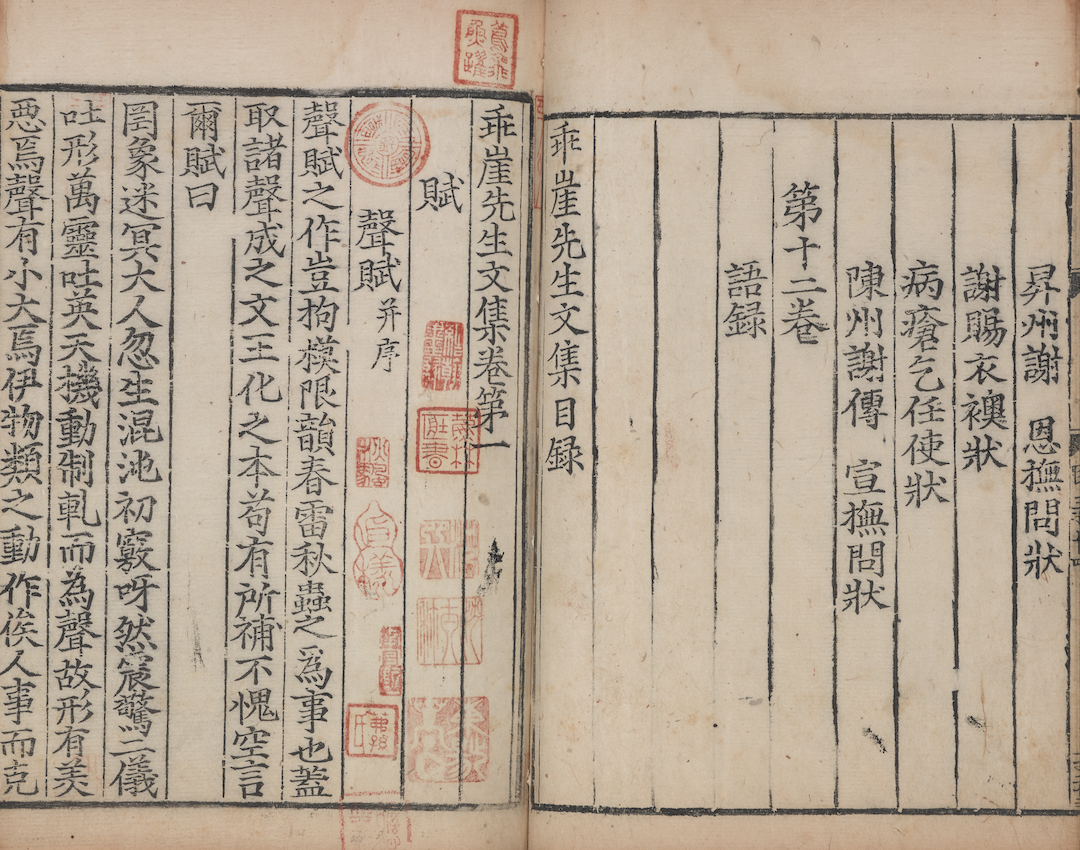
Figure 16 The twelve volumes of "Mr. Guai Ya's Collected Works" by Guo Senqing in the Jiading period of the Southern Song Dynasty, and the first volume of "Appendix"

Figure 17 Ten volumes of "Xie Youpan's Anthology" in Fuzhou Zhouxue block edition in the 22nd year of Song Shaoxing (1152)

Figure 18: In the first year of Yuan Tianli (1328), Fan’s Baoxian family school Sui Hantang engraved version of "Fan Wenzheng Gong Ji" 20 volumes "Bie Ji" four volumes "Lessons" one volume

Figure 19 Three volumes of "Huaihai Layman Long and Short Sentences" in Qiandao's engraved edition of the Southern Song Dynasty

Figure 20 Song edition "Houcun Jushi Collection" fifty volumes "Catalogue" two volumes (two volumes preserved)

Fig. 21 The 100-volume "Wang Wen Gong Wen Collection" and the 2 volumes of "Catalogue" (the 72-volume catalog and the 2 volumes of the catalog) printed on Zhai-engraved official paper in Longshu County, Shaoxing, Southern Song Dynasty
In terms of art, the rise of intellectuals led to the emergence of the literati school in addition to the court school and the secular school. While pursuing artistic expression, literati also paid attention to the exploration of artistic theory. Correspondingly, art theory classics such as "Xuanhe Shupu", "Xuanhe Huapu", "Supplement to Famous Paintings of the Five Dynasties", "Experiences on Famous Paintings", "History of Calligraphy and Painting", "Guangchuan Shupu" and "Guangchuan Painting Postscript" have been produced. The second year of Jingding in the Southern Song Dynasty (1261) in the Shanghai Museum's engraved edition of the Jinhua Shuangguitang "Meihua Xi Shenpu" volume two [Figure 22], with hundreds of portraits of plum blossoms, is the earliest surviving version of this book, and it is also a unique copy. When Wu Hufan refitted it, he painted five pictures of plum blossoms [Fig. 23]. The engraved ink plums and painted colorful plums complement each other, which is pleasing to the eye.
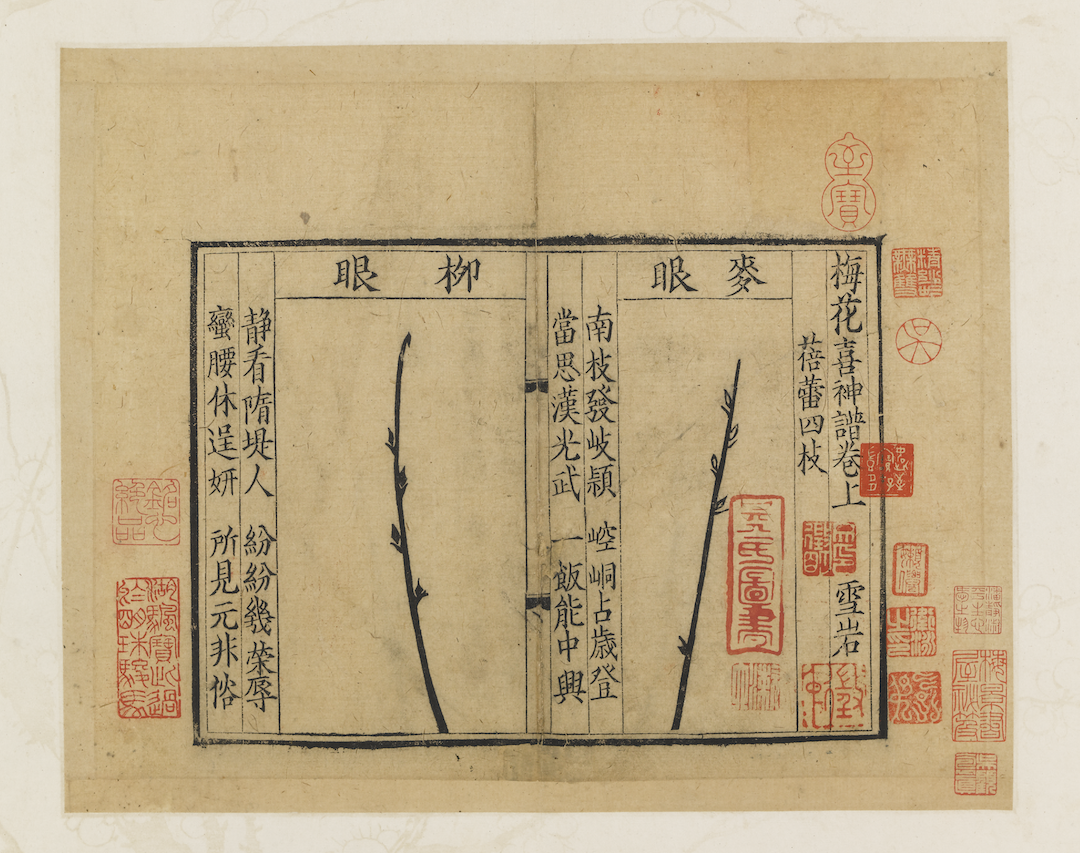
Figure 22 The Second Year of Jingding in the Southern Song Dynasty (1261) Jinhua Shuangguitang engraved version "Plum Blossom Joy God Book" volume two
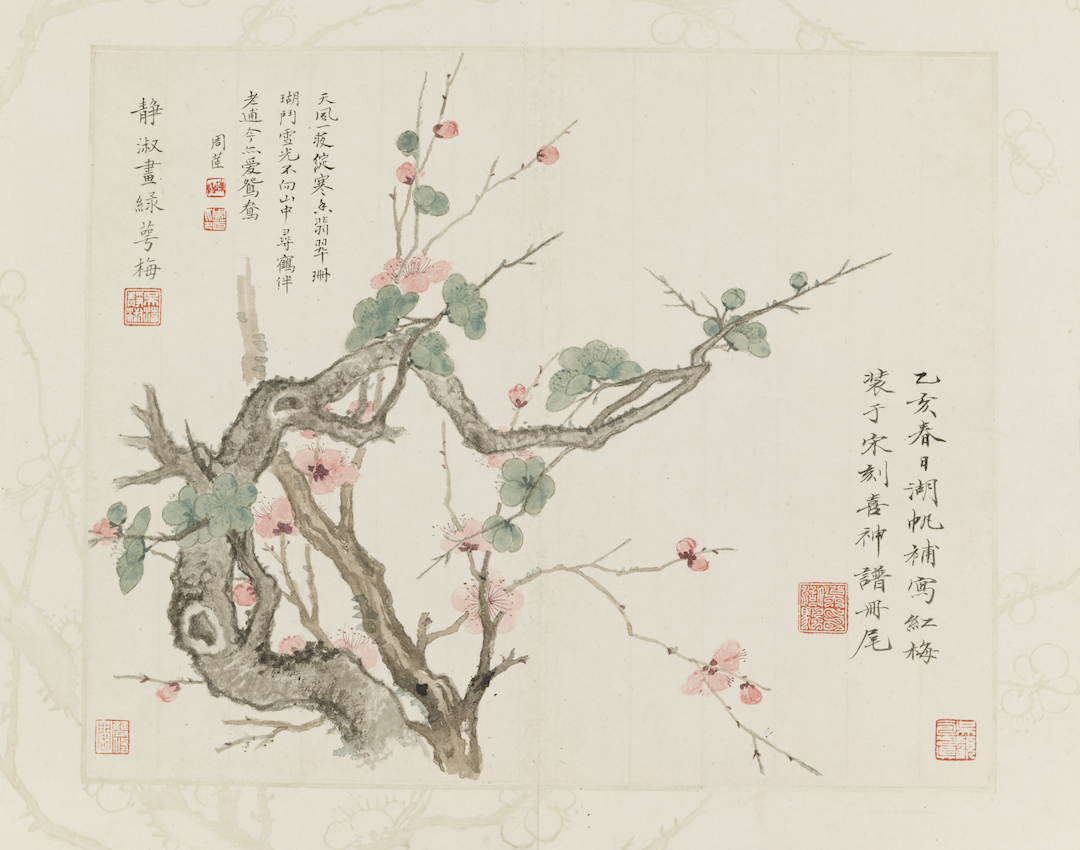
Figure 23 Pan Jingshu and Wu Hufan's green calyx plum
4. Classics of gold and stone
The study of gold and stone emerged in the Song Dynasty. The incentives from the imperial court, the relaxed academic environment, and the high development of extension technology provided convenient conditions for the rise of epigraphy. Inscriptions on inscriptions are beneficial to textual research and evidence history, and it has become common practice for scholar-bureaucrats to collect and study inscriptions on inscriptions, thus forming epigraphy. Huang Liyou's Bibliographies of Inscriptions on Inscriptions recorded 22 inscriptions scholars in the Song Dynasty and 30 works; 5 inscriptions scholars in the Yuan Dynasty and five works. Among them, the famous authors include Lu Dalin's "Archaeological Map", Xue Shanggong's "Recognition of Zhongding and Yi Ware Inscriptions in Past Dynasties", Ouyang Xiu's "Jigulu", Zhao Mingcheng's "Jinshilu", Hong Shi's "Li Shi", "Li Xu", Chen Si's "Bao Ke Congbian", Wang Xiangzhi's "Yudi Beimu", etc., and Yuan Pan Angxiao's "Jinshi Li" is the first Jinshi Yili book. At the beginning of the Song Dynasty, the imperial court ordered the world to ask for ancient inscriptions. Since then, the imperial court has attached great importance to Confucianism, and the Jiayou Stone Classics in the Northern Song Dynasty and the Shaoxing Yushu Stone Classics in the Southern Song Dynasty have been published successively. These measures greatly promoted the development of epigraphy in Song Dynasty. Correspondingly, rubbings or ink copies of stone carvings also began to appear in large numbers. Ouyang Xiu's "Shizhuan Poetry" "The old monk in the mountain was worried about the stone, and printed it with paper to grind loose coal", which is the rubbing of Li Yangbing's "Shuzi Quanming". "Sui Shu·Jing Ji Zhi" describes the Liang Yizi Stone Scripture and the Three Character Stone Scripture, and the stone inscriptions made of paper hammered out should have originated in the Southern and Northern Dynasties. The surviving Tang rubbings include Tang Taizong's "Hot Spring Inscription", Ouyang Xun's "Huadu Temple Stele" and Liu Gongquan's "Shence Army Stele" and "Diamond Sutra" from the Dunhuang Stone Chamber. There are not many surviving Song rubbings, and there is no exact statistics at present. It is characterized by excellent paper and ink, and exquisite workmanship. The Guozuo of the Yuan Dynasty was less than a hundred years old, and the possibility of changes in the steles is small. It is often difficult to find a clear reference to distinguish Song Tuo from Yuan Tuo when correcting the stele.
Generally speaking, most of the Song rubbings of steles are cut-outs and framed, and there are few whole rubbings. Its content is mostly Han and Tang steles, especially "Confucius Temple Stele", "Jiucheng Palace Liquan Inscription", "Huangfu Birthday Stele", "Huiren Collection Preface to Wang Shengjiao", "Li Sixun Stele", "Lushan Temple Stele", "Magu Fairy Altar" "Records" and other famous steles of the Tang Dynasty. "Confucius Temple Monument", Yu Shinan wrote an essay and wrote Dan, Tang Ruizong Li Dan seals the forehead, Tang Zhenguan erected the monument in the early years of Tang Dynasty, and soon destroyed it. Wu Zhou re-imitated it, but Shi did not pass it on. The Song Tuoben in the Shanghai Museum is a reprint of the "Shaanxi Version" by Wang Yanchao of Song Dynasty, which was previously collected by the Qing Palace. "Jiucheng Palace Liquan Inscription", written by Wei Zheng, Ouyang Xun Shudan, carved in stone in the sixth year of Tang Zhenguan (632). The stele is now in Linyou County, Shaanxi Province, and is seriously damaged. The rubbings of the Northern Song Dynasty collected by the Palace Museum are the earliest surviving rubbings, which were previously collected by Li Qi, the son-in-law of the Ming Dynasty. The three volumes in the Shanghai Museum are rubbings of the Southern Song Dynasty [Fig. 24]. "Huangfu's Birthday Monument", written by Yu Zhining and written by Ouyang Xun. The date of inscription is not inscribed in the inscription, but Luo Zhenyu's "Reading the Tablet" was verified to be engraved in the seventeenth year of Tang Zhenguan (643). The stele was broken in the Ming Dynasty and is now in the Forest of Steles Museum in Xi'an. A volume of rubbings from the Southern Song Dynasty in the Shanghai Museum [Fig. 25]. "Huiren Collection Wang Shengjiao Preface", Tang Taizong Li Shimin wrote the preface, Tang Gaozong Li Zhi wrote notes, Tang Shi Huairen Collection Wang Xizhi's running script, Tang Xianheng three years (672) carved stone. The stele is now in the Forest of Steles Museum in Xi'an. There are many rubbings of this stele in the Song Dynasty, and the Shanghai Museum has six volumes, or the undamaged version of the "ci" in the Northern Song Dynasty [Figure 26], or the unbroken version of the Southern Song Dynasty [Figure 27]. Both "Li Sixun Stele" and "Lushan Temple Stele" were written and written by Li Yong. The former has a Song rubbings in the Shanghai Museum, and the latter has two volumes. The only copy of Song Tuo's "Fahua Temple Stele" written by Li Yong is also in the Shanghai Museum. A Song rubbing version of Yan Zhenqing's "The Story of the Magu Fairy Altar in Big Characters", one volume and one fragment (2 copies) in the Shanghai Museum. As for the Song Gu rubbings [Figure 28] of Zhang Xu's regular script "The Story of the Stone Pillars of Langguan", it was previously collected by Ming Wang Shizhen and donated by Sun Boyuan to the Shanghai Museum. Donated by the Sun family, there are also the aforementioned "Li Sixun Stele" and Song Tuo's solitary edition "Fangyuan Temple". "Fangyuan Temple" is an old collection of Shen Zhou. In addition, the Shanghai Museum also has a Song rubbing copy of Jiang Xi's "Jiang Xia Stele", Zhang Congshen's "Li Xuanjing Stele" and the anonymous book "Bi Luo Stele". As for the gold inscription and gold extension "Shu Xianzhu Temple Stele", it was in the old collection of Tang Shun, and it was also collected by Liu E and Wu Hufan, and it is also an isolated extension. An even more noteworthy solitary copy of Song Tuo is "The Epitaph of Liang Xiaofu and Concubine Jing" written by Xu Mian [Fig. 30]. In the Southern Dynasties, there were many bans on steles, and few steles survived. This extension is extremely cherished by Pan Zuyin. After it was passed on to Wu Hufan, Wu listed it and the aforementioned "Meihuaxi Shenpu" as one of the four treasures of Wu's cultural relics. The above-mentioned inscriptions in the rubbings of the Song Dynasty were often written by famous masters, so in addition to the value of historical materials such as county prestige, lineage, official position, and geography, they became a must for learning calligraphy.
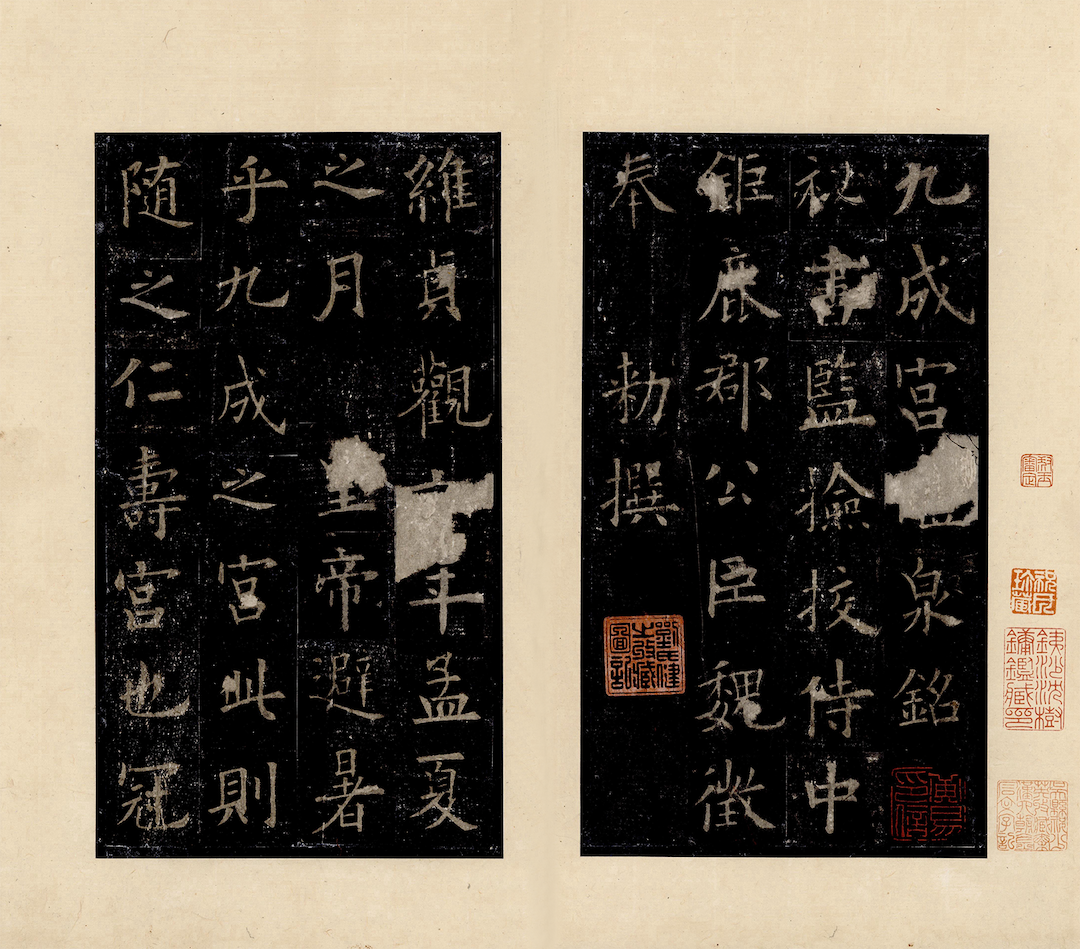
Figure 24 Rubbings of the late Southern Song Dynasty "Jiucheng Gong Liquan Ming"
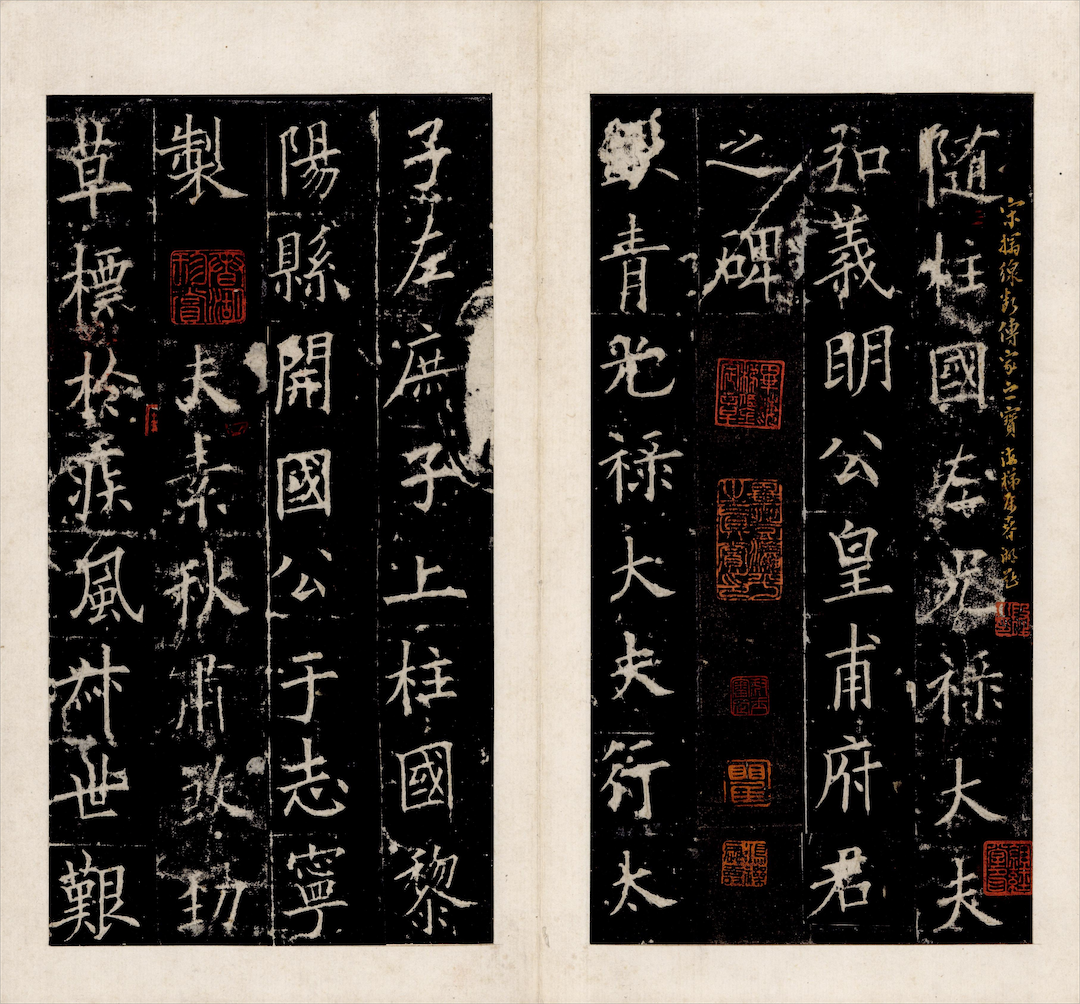
Figure 25 Rubbings of the Southern Song Dynasty "Huangfu's Birthday Monument"
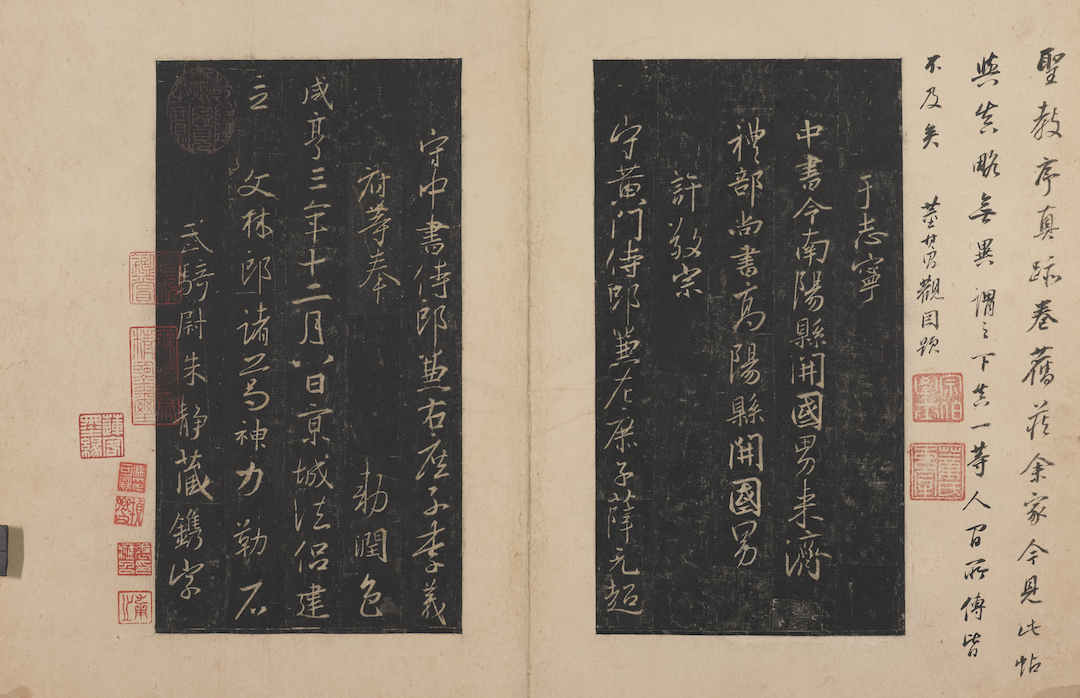
Figure 26 The inscription and postscript of Dong Qichang in the undamaged version of "Huiren Ji Wang Shengjiao Preface" with the word "ci" extended in the Northern Song Dynasty

Figure 27 The Tuoweiduan version of the Southern Song Dynasty "Huiren Ji Wang Shengjiao Preface"
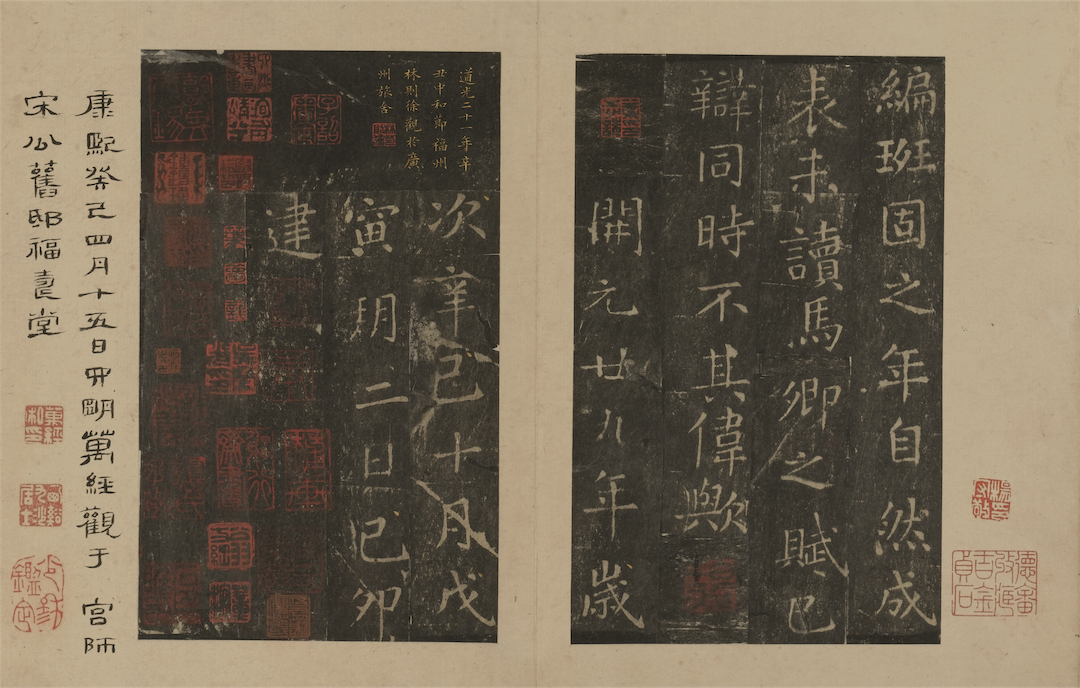
Figure 28 Song Ruoben "The Story of the Stone Pillar of Langguan"
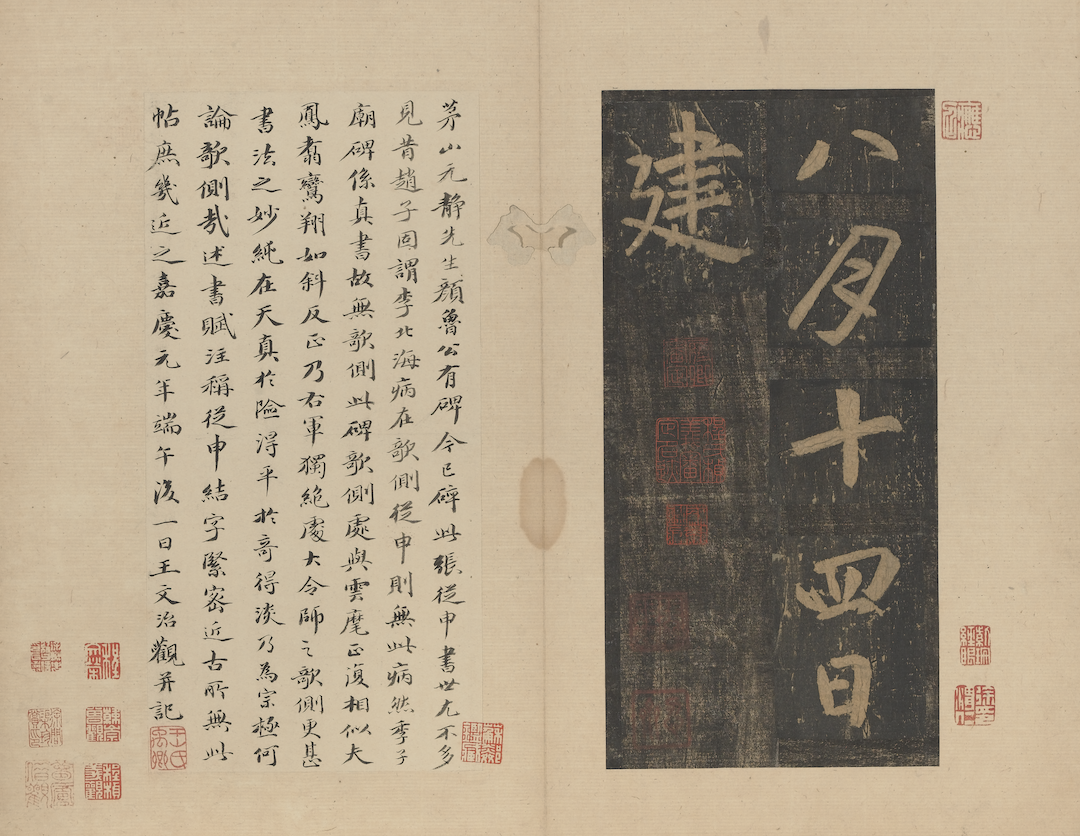
Figure 29 Wang Wenzhi's inscription and postscript on the "Li Sixun Stele" in Song Ruoben

Figure 30 Song rubbings "Epitaph of Liang Xiaofu and Concubine Jing"
"The ancients said that calligraphers before the Song Dynasty mostly relied on stele inscriptions." In the Song Dynasty, Fatie appeared to preserve the ancient calligraphy. In Chunhua, Emperor Taizong of the Song Dynasty "exited the books of the emperors and ministers of the past dynasties hidden in the ban, and the board of the order was given to both the ministers and the two houses." After "Chunhua Pavilion Tie" came out, it was constantly reprinted. "Tan Tie", "Jiang Tie", "Daguan Tie", "Ru Tie" and "Linjiang Tie" came out one after another, either officially or privately, resulting in Tie study. Theoretical works such as Huang Bosi's "Fatie Journal Mistakes", Cao Shimian's "Fatie Genealogy", Liu Cizhuang's "Fatie Shiwen", Jiang Kui's "Jiang Tiping", and Zeng Hongfu's "Stone Inscriptions" have also come out one after another. In addition to cluster posts, single-cut posts such as "Ci En Yan Pagoda Tang Xian Inscribed Post", "Shaoxing Rice Post", "Dongpo Su Gong Post" and so on have also come out. In the early years of the Southern Song Dynasty, Chao Gongwu wrote "Junzhai Reading Records", which included ten volumes of "Chunhua Fatie", 22 volumes of "Wuling Fatie", and three volumes of "Fatie Shiwen", which were included in the Jingbu primary school category . When Zhao Xibian wrote "Du Shu Fu Zhi", it listed the method post category separately after the general collection of the collection department, and recorded 21 collections and single engraved posts of the Song Dynasty. "Later post" volume. The classification change in the catalog is a sign that the new academic category has grown.
Song Tuo engraved in the Song Dynasty is a top-grade engraved post. As far as Cong Tie is concerned, the rarest copy of "Chunhua Pavilion Tie" [Fig. 31] and the repaired version of "Chunhua Pavilion Tie" [Fig. 32] in the Shanghai Museum are both antique and rare treasures. The rarest edition of "Chunhua Ge Tie" has four volumes, "the sixth volume is the ancestral engraving of the Quanzhou edition of the Northern Song Dynasty, and the fourth, seventh, and eighth volumes are the only surviving original stone rubbings of the ancestral engraving", volume 6 has an anonymous inscription in the Northern Song Dynasty, and volume 8 There is a postscript written by Wang Huai, Prime Minister of the Southern Song Dynasty, which is of great cultural value. The significance of this post is not only that it is the best surviving extension, but also that it helps people today to deepen their understanding of the version of "Ge Tie". Therefore, the most rare book entered the Shanghai Expo in 2003, which caused a huge sensation and became a grand event in the cultural circle of our country. "Chunhua Pavilion Tie" Xiuneisi edition was engraved by Emperor Xiaozong of Song Dynasty Zhao Yunzhi. As for Pan Zuchun's pure edition of "Chunhuage Tie" in the Shanghai Museum, it is a Southern Song rubbings engraved from the Guozijian edition, and the value of its edition cannot be underestimated. The first and second volumes of "Lanting Xutie" in the Shanghai Museum [Fig. 33], according to Mr. Xu Senyu's textual research, should have been carved in stone in the early years of Zhenghe in the Northern Song Dynasty. He also believes that this book "should be the only copy handed down from the "Lanting Xutie"", "Among them Tian Bingshe Tie, Qixian Tie, Bijing Tie, Rihan Tie, Xiao Ziyun's Ode to Master, Xu Haoxian's tomb inscription and Ye Yu Temple poems; Liu Gongquan's purple silk shoe post; Wang Xi's post on moon phase, post on cruel drought, post on chasing wounds, post on Song Lai, etc.; post on calligraphy by Linxi of Emperor Gaozong of Song Dynasty, etc., are all extremely important and rare Song engraved editions. In recent years, the Forbidden City has also collected a fragment of "Lanting Xutie", which contains volumes 4 to 6, which may be combined with the Yanjin sword of the Shanghai Museum. As far as single engraved posts are concerned, the Shanghai Museum also has some Song rubbings. Only two of them are presented here. One is Tang Yan Zhenqing's book "Xiaozi Magu Xiantan Ji". The original stones of the small-character version, the large-character version, and the Chinese-character version are all lost, and the value of Song Tuo is even more prominent. The second is the combined volume of Cai Xiang's "Tea Record" and Wang Xizhi's "Huang Ting Jing Jing". This was also donated by Sun Boyuan.

Figure 31 Song Ruoben "Chunhua Ge Tie" (the rarest copy)
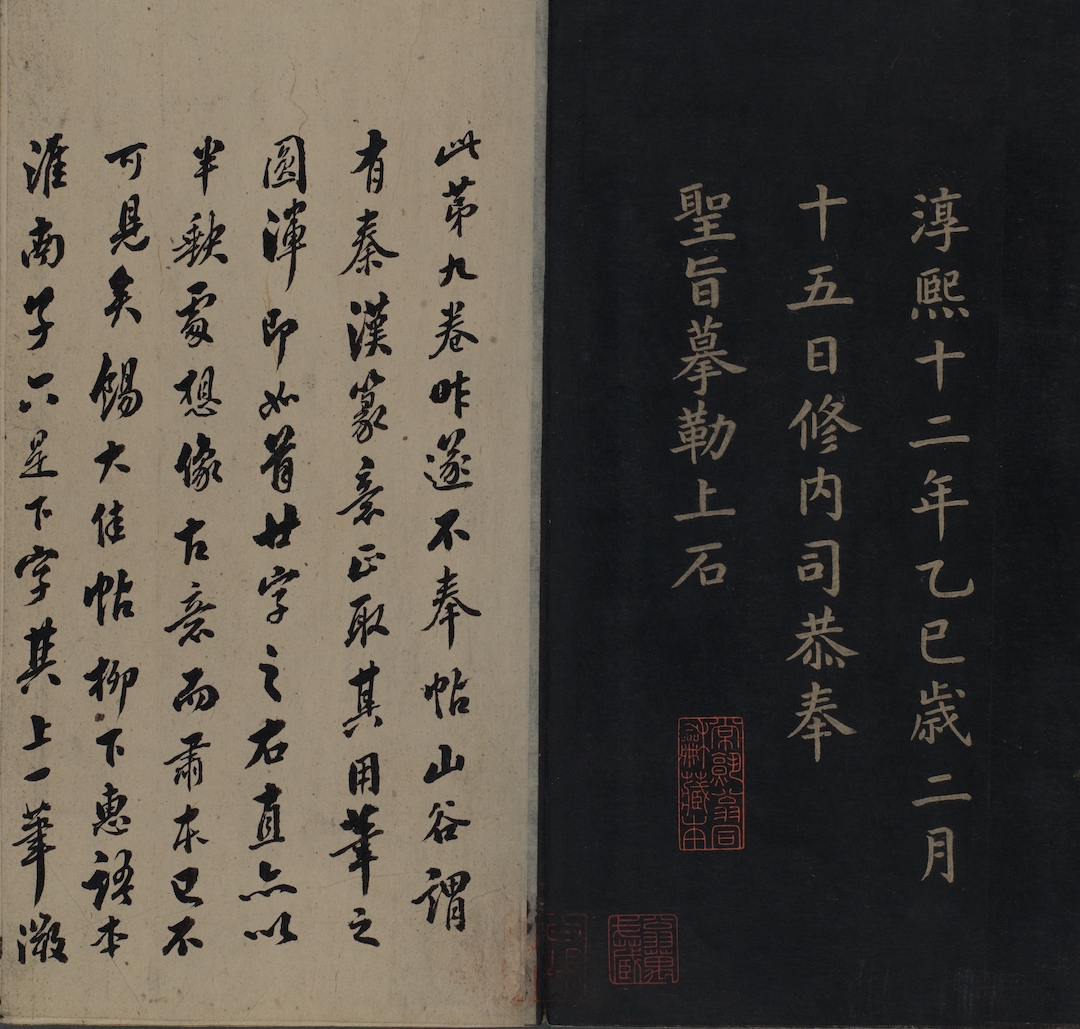
Figure 32 Song Ruoben "Chunhua Ge Tie" (Xiu Nei Si edition)
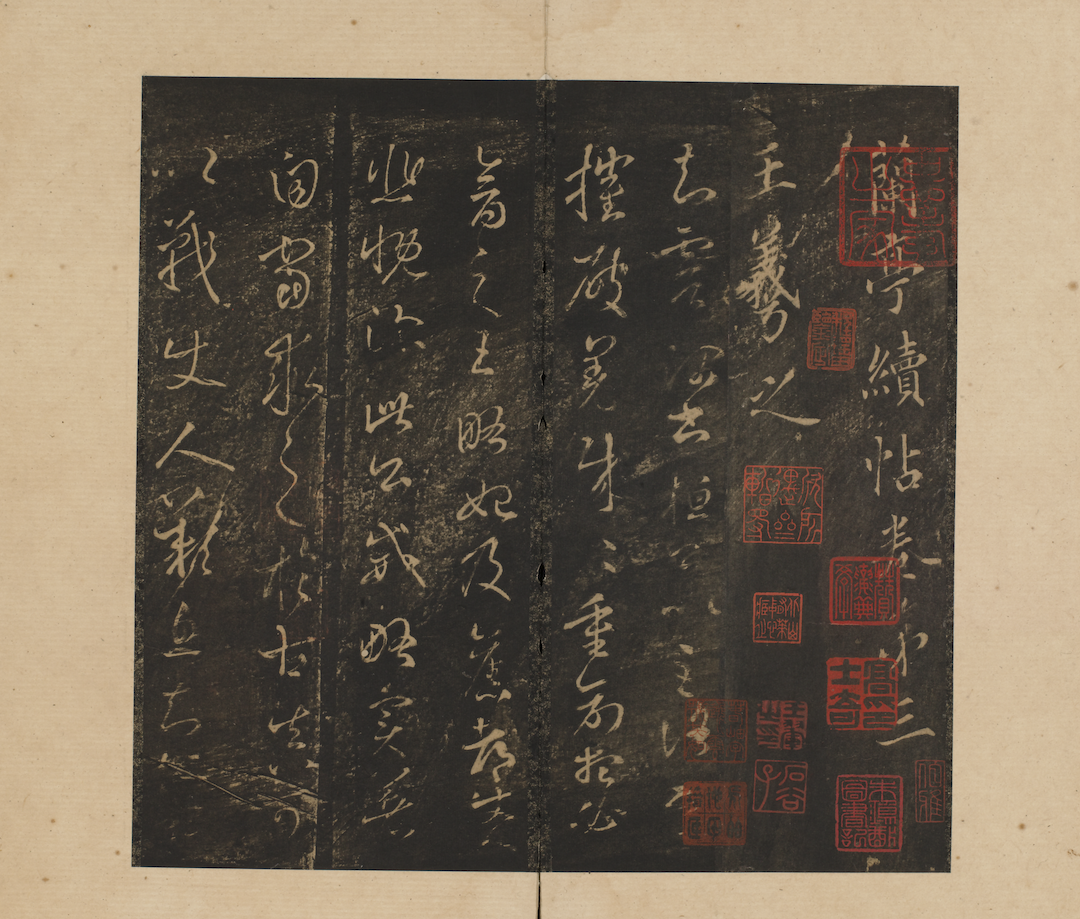
Figure 33 Song Ruoben "Lanting Continuation Post"
In addition to the above four types of classics, the Shanghai Museum also has five historical classics in block editions from the Yuan Dynasty, all of which were repaired in the Ming Dynasty, and are attached here. During the Song and Yuan Dynasties, historiography was also extremely developed, and the publication of classics by the Ministry of History was also very prosperous. One is to publish the official history of the past dynasties, including the revised history of the Song and Yuan Dynasties. The seven histories of Meishan in the Song Dynasty, the three histories inscribed by Huang Shanfu in the Song Dynasty, and the seventeen histories inscribed by Jiulu Confucianism in the Yuan Dynasty are all famous inscriptions. Confucianism engraved on Jiankang Road in the 11th year of Yuan Dade (1307) in Shanghai Museum "New Tang Book" is one of the seventeen histories engraved by the aforementioned Nine Routes of Confucianism. There is also a "New Tang Book" (forty-seven volumes), which is a revised version engraved in the second year of Yuan Tianli (1329). This book was donated by Mr. Xu Senyu, former curator of Shanghai Museum. Also donated by Mr. Sen are the 130 volumes of "Book of Jin" written in Yuan Dynasty and the three volumes of "Yinyi" (one volume preserved), and the printed version of "Song Shi Yue Fei Biography" written in Yuan Dynasty and Ming Dynasty. Zhongwu Temple Famous Sage Poems "Volume [Figure 35]. The engraving of the latter book is more complicated, and the printing time is in the Ming Dynasty, which is worthy of attention. The National Library has a block edition of "Book of Jin" by Sen Laoshou School, so the former book also has special value beyond the edition. It is worth mentioning that Mr. Sen was a member of the first State Council Ancient Books Arrangement and Publishing Planning Group, and he made great contributions to the Shanghai Museum's ancient books undertaking. The second is to publish other historical books compiled by the Song and Yuan Dynasties. The chronicle includes "Zizhi Tongjian" written by Sima Guang of Song Dynasty; Jiangangmu, the canonical system includes Ma Duanlin's "Wenwen Tongkao", and so on. There is a twenty-four volumes of "Tong Jian Continued" (two volumes preserved) in the engraved edition of Gu Ti from Yuan to Zhengjian in the Shanghai Museum. This book is packaged on the back, which is worth noting. There is a process of change in the binding form of ancient books. The printed editions appeared in the Song Dynasty, and butterfly bindings began to be used, while the back bindings appeared in the late Southern Song Dynasty, and the thread bindings were generally used after the Ming Dynasty. Many existing Song and Yuan ancient books have been modified by later generations, but the binding of this book should not have been modified.

Fig. 34 Confucianism engraved on Jiankang Road in the 11th year of Dade in Yuan Dynasty (1307) Ming Dynasty Nanjing Guozijian revised version of "Tang Shu" 225 volumes (8 volumes preserved)

Fig. 35 One volume of "Song Shi Yue Fei Biography" and one volume of "Yue Zhongwu Temple Famous Sage Poems" printed in Yuan Dynasty and Ming Dynasty
The ancient books of the Song and Yuan Dynasties in the Shanghai Museum have three types of editions: manuscripts, engraved editions, and rubbings, and they have been handed down in an orderly manner. After passing through the treasures of bibliophiles in the past, they left inscriptions, postscripts, corrections, and observations. There are many seals and seals, which have important edition literature value . These ancient books are rich in content, covering four volumes, including rare or even isolated ones, with strong information and high collation value. At the same time, they help to deepen our understanding of the academic trends in the Song and Yuan Dynasties, and have important academic research value. These ancient books are written and engraved in Ou, Liu, Yan, and Zhao styles, and the printing is exquisite and exquisite; The envelopes or panels of ancient brocade and nanmu make them themselves works of art and have important artistic aesthetic value.
Many of the ancient books of the Song and Yuan Dynasties in the Shanghai Museum have been described in the "Chinese Ancient Books and Rare Books", and some have not been described. In 2007, the state implemented the ancient book protection plan and established the "National List of Precious Ancient Books". 25 ancient books of the Song and Yuan Dynasties collected by the Shanghai Museum were declared and included in the "National List of Precious Ancient Books". . In 2008, Shanghai also established the "Shanghai List of Precious Ancient Books". In addition to the above-mentioned 24 national precious ancient books that were included in the "Shanghai List of Precious Ancient Books", 8 other ancient books of the Song and Yuan Dynasties collected by the Shanghai Museum were selected into the "Shanghai List of Precious Ancient Books" ". (The specific selection list is omitted here)
(The author of this article is an associate research librarian of the Shanghai Museum. The original title is "Synthesis of Ancient Books of the Song and Yuan Dynasties in the Shanghai Museum", originally published in "Yu Chu Liu Fang: The Essence of Ancient Books of the Song and Yuan Dynasties in the Shanghai Museum", Shanghai Painting and Calligraphy Publishing House, 2023, original text available note, not included here)
